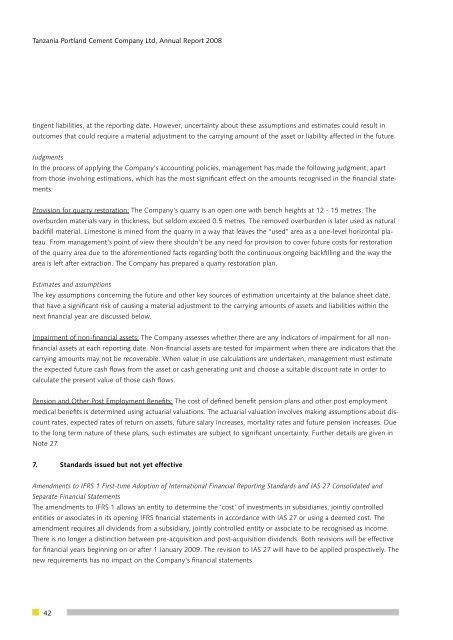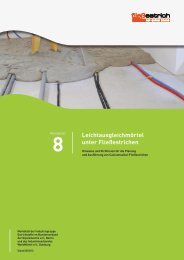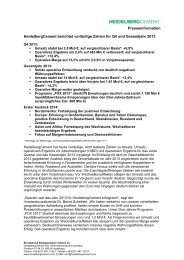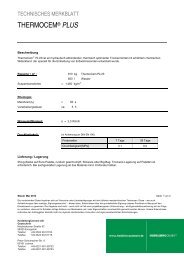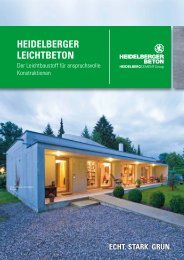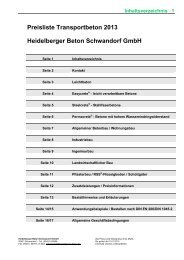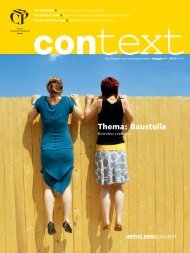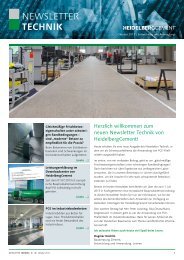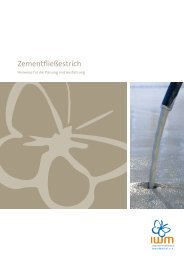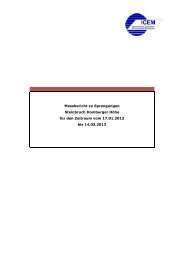TPCC Annual Report 2008.indd - HeidelbergCement
TPCC Annual Report 2008.indd - HeidelbergCement
TPCC Annual Report 2008.indd - HeidelbergCement
You also want an ePaper? Increase the reach of your titles
YUMPU automatically turns print PDFs into web optimized ePapers that Google loves.
Tanzania Portland Cement Company Ltd, <strong>Annual</strong> <strong>Report</strong> 2008<br />
tingent liabilities, at the reporting date. However, uncertainty about these assumptions and estimates could result in<br />
outcomes that could require a material adjustment to the carrying amount of the asset or liability affected in the future.<br />
Judgments<br />
In the process of applying the Company’s accounting policies, management has made the following judgment, apart<br />
from those involving estimations, which has the most significant effect on the amounts recognised in the financial state-<br />
ments:<br />
Provision for quarry restoration: The Company’s quarry is an open one with bench heights at 12 - 15 metres. The<br />
overburden materials vary in thickness, but seldom exceed 0.5 metres. The removed overburden is later used as natural<br />
backfill material. Limestone is mined from the quarry in a way that leaves the “used” area as a one-level horizontal pla-<br />
teau. From management’s point of view there shouldn’t be any need for provision to cover future costs for restoration<br />
of the quarry area due to the aforementioned facts regarding both the continuous ongoing backfilling and the way the<br />
area is left after extraction. The Company has prepared a quarry restoration plan.<br />
Estimates and assumptions<br />
The key assumptions concerning the future and other key sources of estimation uncertainty at the balance sheet date,<br />
that have a significant risk of causing a material adjustment to the carrying amounts of assets and liabilities within the<br />
next financial year are discussed below.<br />
Impairment of non-financial assets: The Company assesses whether there are any indicators of impairment for all non-<br />
financial assets at each reporting date. Non-financial assets are tested for impairment when there are indicators that the<br />
carrying amounts may not be recoverable. When value in use calculations are undertaken, management must estimate<br />
the expected future cash flows from the asset or cash generating unit and choose a suitable discount rate in order to<br />
calculate the present value of those cash flows.<br />
Pension and Other Post Employment Benefits: The cost of defined benefit pension plans and other post employment<br />
medical benefits is determined using actuarial valuations. The actuarial valuation involves making assumptions about dis-<br />
count rates, expected rates of return on assets, future salary increases, mortality rates and future pension increases. Due<br />
to the long term nature of these plans, such estimates are subject to significant uncertainty. Further details are given in<br />
Note 27.<br />
7. Standards issued but not yet effective<br />
Amendments to IFRS 1 First-time Adoption of International Financial <strong>Report</strong>ing Standards and IAS 27 Consolidated and<br />
Separate Financial Statements<br />
The amendments to IFRS 1 allows an entity to determine the ‘cost’ of investments in subsidiaries, jointly controlled<br />
entities or associates in its opening IFRS financial statements in accordance with IAS 27 or using a deemed cost. The<br />
amendment requires all dividends from a subsidiary, jointly controlled entity or associate to be recognised as income.<br />
There is no longer a distinction between pre-acquisition and post-acquisition dividends. Both revisions will be effective<br />
for financial years beginning on or after 1 January 2009. The revision to IAS 27 will have to be applied prospectively. The<br />
new requirements has no impact on the Company’s financial statements.<br />
42


